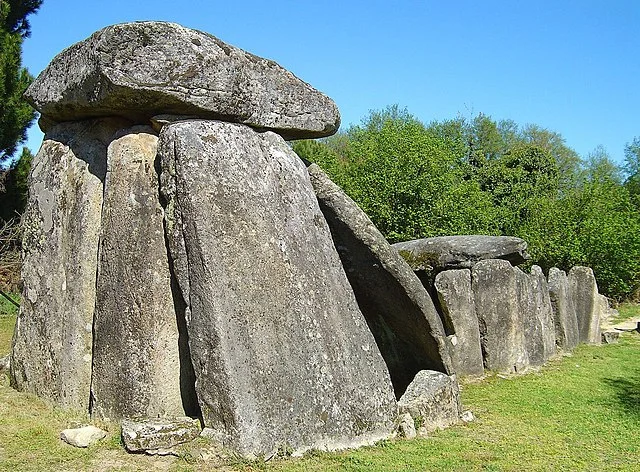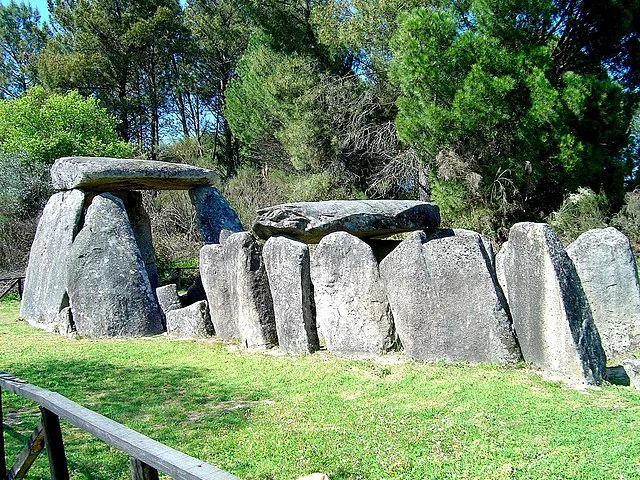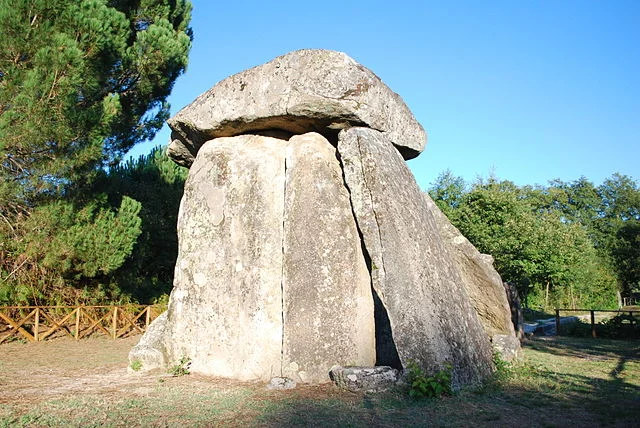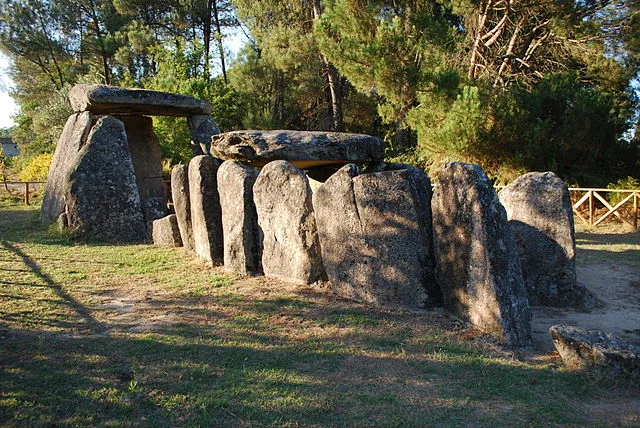The Dolmen of Cunha Baixa is a prehistoric megalithic structure located in the Nelas municipality, Portugal. It dates to the late Neolithic period, approximately 3000 BC. Like many dolmens in Europe, it served as a communal burial site and reflects the ritual practices of early agricultural societies.
Get your dose of History via Email
Structure and Layout

The Dolmen of Cunha Baixa features a classic design typical of megalithic tombs. It consists of a large chamber formed by vertical stone slabs, topped by a horizontal capstone. The burial chamber is about three meters high, with several large stones supporting the roof. A long corridor, also formed by stone slabs, leads to the main chamber, though parts of it are now missing due to erosion and other damage over time.
The stones used in the dolmen’s construction were likely sourced locally. The builders transported and erected them using rudimentary tools, demonstrating advanced knowledge of engineering for their time. Though some stones have shifted over millennia, the basic structure remains intact.
Archaeological Significance

The Dolmen of Cunha Baixa holds archaeological importance due to its well-preserved state and its insight into Neolithic funerary practices. Excavations have uncovered human remains and a variety of grave goods, including pottery and stone tools. These artifacts suggest that the dolmen was used for multiple burials over an extended period.
The discovery of these items has provided valuable information about the social and cultural aspects of the people who built and used the dolmen. The presence of grave goods indicates a belief in an afterlife, where items placed with the deceased would aid them in their journey.
Comparative Analysis
The Dolmen of Cunha Baixa shares similarities with other Iberian dolmens in terms of construction and function. However, its size and complexity set it apart from smaller, simpler structures. The corridor dolmen design, characterized by a passageway leading to the burial chamber, is typical of the western Iberian Peninsula.
Dolmens like this one were communal tombs, and their construction required significant community effort. This highlights the importance of collective work and shared belief systems in Neolithic society.
Preservation and Tourism

The site is open to the public and serves as an educational and cultural landmark. Local authorities have taken steps to preserve the dolmen, but natural weathering and human activity have caused damage over time. Despite this, the Dolmen of Cunha Baixa remains one of Portugal’s most significant prehistoric sites.
Efforts to raise awareness about the dolmen’s cultural importance have led to an increase in tourism, benefiting local communities. Preservation efforts remain crucial, however, to protect the site for future generations.
Conclusion
The Dolmen of Cunha Baixa stands as a testament to the ingenuity and social complexity of early Neolithic societies. Its construction reflects the technological and cultural advancements of the time, while the artifacts found at the site provide insight into the burial practices and beliefs of its builders. As one of the most important megalithic monuments in Portugal, it continues to offer valuable information to archaeologists and historians.
Source:

